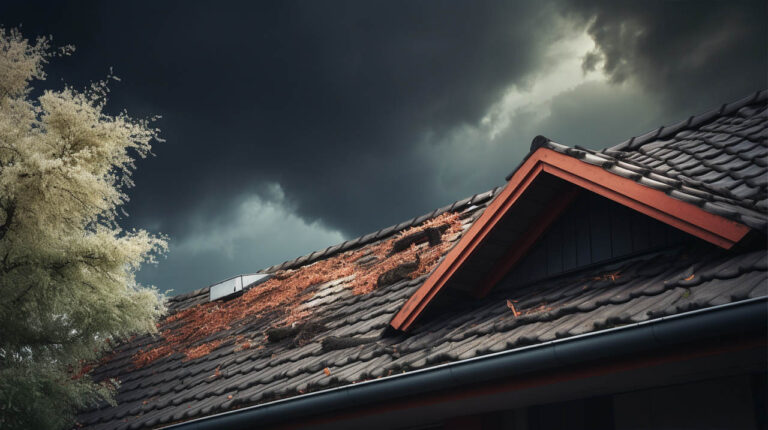Roofs are the first line of defense against the unpredictable forces of nature. From the scorching sun to the pounding hail, they endure it all to keep us safe and dry. In regions like Colorado, where the weather can be particularly harsh, understanding the potential threats to your roof is crucial. Let’s delve deeper into the types of storm damage your roof might face and how to address them.
1. The Weight and Melt: Snow Damage
Snow, while picturesque, can be a silent adversary to your roof. The accumulation of snow adds significant weight, and if your roof isn’t structurally sound, it can lead to potential issues. Moreover, the melting and refreezing of snow at the base of your roofline can result in ice dams. These dams can cause water to pool, exerting extra pressure on your shingles and possibly leading to internal damage. It’s essential to ensure your home’s insulation is up to par to minimize heat escape, which can exacerbate this issue.
2. The Pounding Pellets: Hail Damage
Hail is a frequent visitor in places like Colorado. Depending on the size and intensity of the hailstorm, the damage can range from minor to severe. Large hailstones can dent roofing materials, while wind-driven hail can strike your roof from various angles, causing compounded damage. The roof caps, being the highest point, are particularly vulnerable. Over time, even smaller hailstones can wear down your roof, making it more susceptible to future weather threats.
3. The Persistent Pour: Rain Damage
Rain, in its persistence, can be both a blessing and a curse. While roofs are designed with waterproofing measures, continuous rainfall can wash away the granules from shingles, compromising their effectiveness. Regularly checking your gutters can give you an indication of this wear, helping you address potential issues before they escalate.
4. The Invisible Force: Wind Damage
Wind, often an overlooked factor, can amplify other types of storm damage. It can drive hail in different directions, blow away already loosened roofing materials, and even cause overhanging tree limbs to fall onto your roof. The debris carried by the wind can clog gutters, leading to water backup and potential internal damage.
5. The Deceptive Calm: Sunshine Damage
The summer sun, while a welcome respite from storms, can still harm your roof. Prolonged exposure to sunlight can make shingles brittle, making them more vulnerable to damage from other weather elements. It’s essential to regularly inspect your roof for signs of sun damage, such as curling shingles or fading colors.
Addressing the Aftermath: Post-Storm Roof Care
After a storm, it’s paramount to assess your roof’s condition. If you suspect any damage, it’s advisable to contact a reputable roofing service in North Hills, like TecHero Roofing. They can provide a thorough inspection and recommend necessary repairs. Regular inspections, especially post-storm, can help identify issues early on, saving you from potential hefty repair bills in the future.
Proactive Measures for Roof Longevity
Being proactive can significantly extend your roof’s lifespan. Here are some steps you can take:
- Regular Inspections: Especially after severe weather, these can help identify and address problems early on.
- Gutter Maintenance: Ensure your gutters are free from debris to prevent water backup.
- Tree Maintenance: Trim overhanging branches to prevent potential damage during storms.
- Insulation Checks: Proper insulation can prevent heat loss, reducing the risk of ice dams.
- Install Leak Barriers: These offer added protection against water penetration in vulnerable areas.
In Conclusion
Your roof is an invaluable asset, and understanding the potential threats from various weather elements can help you take better care of it. By being proactive and seeking the expertise of renowned North Hills roofers like TecHero Roofing, you can ensure your roof remains in top condition, come rain or shine.


